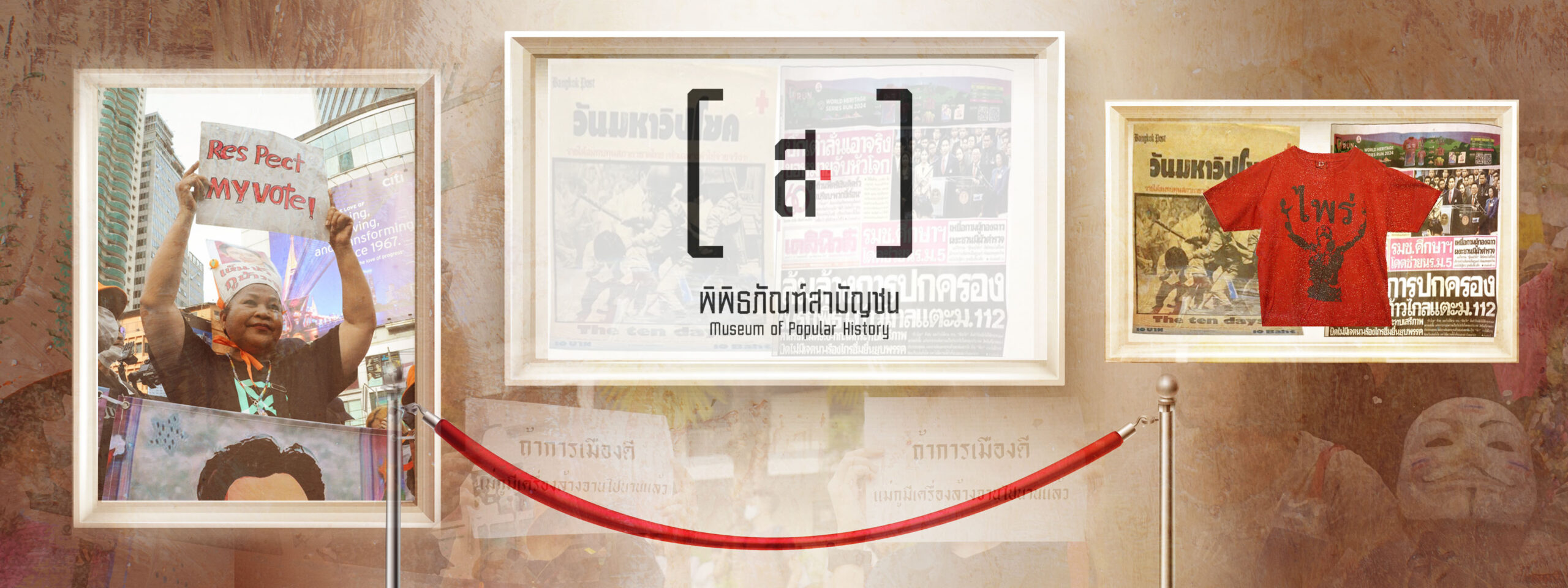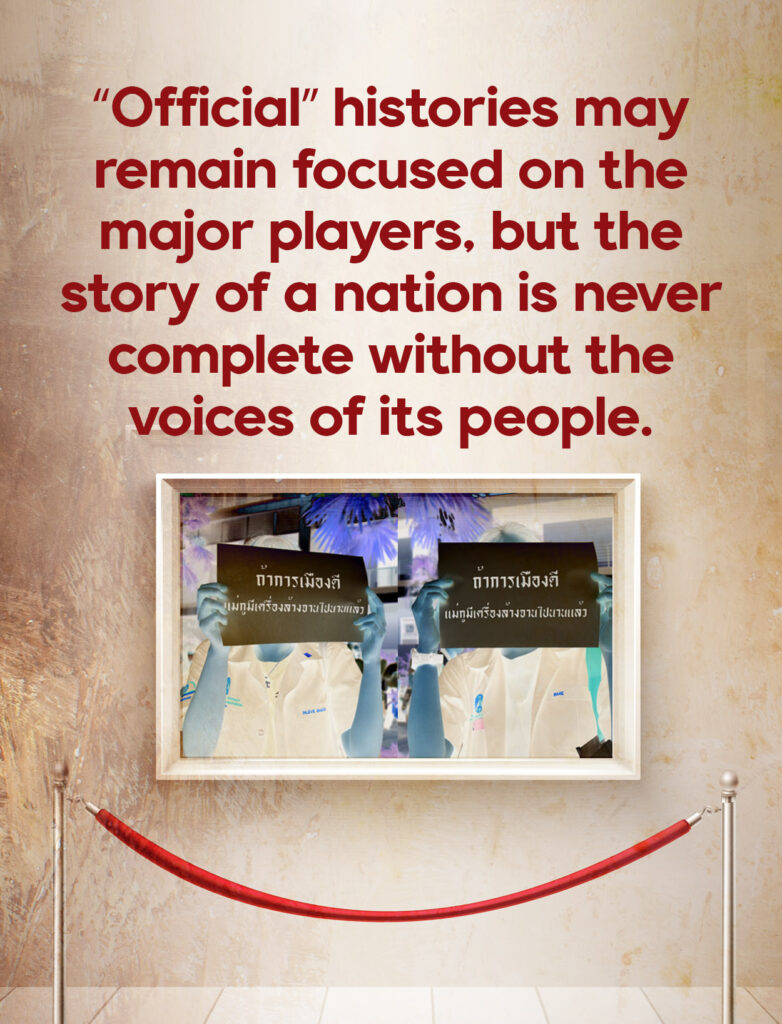|
Getting your Trinity Audio player ready...
|
S
omeone once said that “history is written by the victors,” and while it is a quote that originated in the West, it resonates to a certain extent as well in Thailand. In this Southeast Asian country, state entities get to tell the nation’s history and preserve its collective memories through monuments, museums, or official historical textbooks that focus mostly on the monarchy and those who had been in power.
Some years ago, though, I came to realize that stories of the ordinary people in the political life of the nation were rarely mentioned in Thailand’s official history. And somehow that didn’t sound quite right.
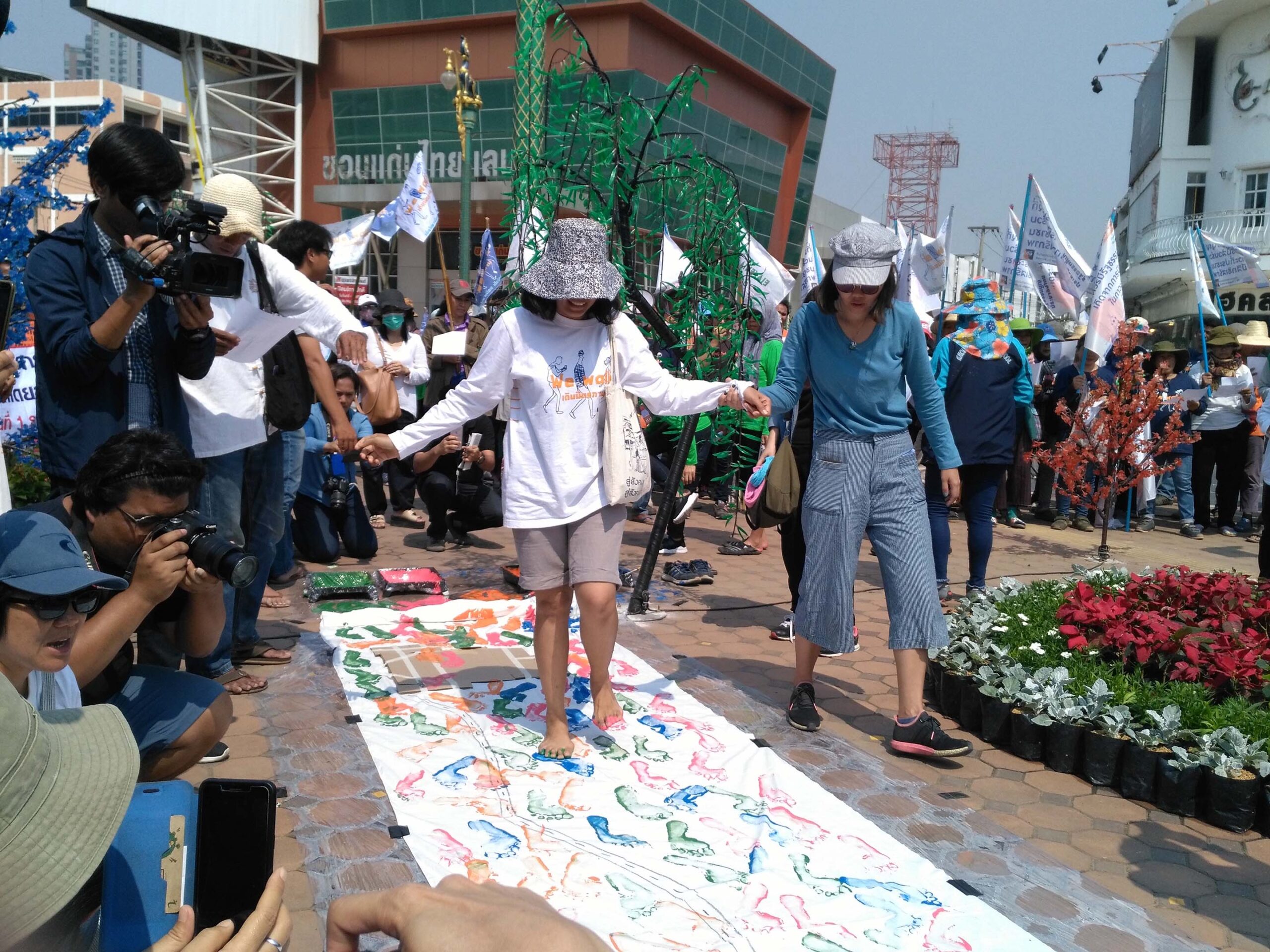
I studied history at university. But you could say that it really all began with a piece of cloth that had footprints all over it — and which went missing.
On Feb. 16, 2018, Thai rights advocates who had just completed a 28-day, 450-kilometer walk from the capital Bangkok to the northeastern city of Khon Kaen had gathered around a big piece of white canvas that had been laid on the ground. They had endured threats and intimidation from authorities throughout their journey, but they were determined that their demands regarding community rights, universal health insurance, food security, and a better Constitution would be heard. They wanted to commemorate their victory, and so the participants in the march dipped their feet in paint and left their colored footprints on the fabric spread near the Democracy Monument in downtown Khon Kaen.
I was part of that march. And as I saw the white cloth fill up with footprints, I thought of how that piece of fabric was being transformed into an object of historical significance.
A week later, I contacted the walk’s organizers, with plans to acquire the footprint cloth. But they didn’t know where it had ended up. That got me thinking that with organizers and participants of movements usually preoccupied with all sorts of details, systematically collecting materials used in their struggle would be a big challenge — and probably not among their priorities.
Furthermore, many political events often involved a group of activists formed ad hoc specifically to organize the event; once the event was over, the organizing committee or group would disband, and therefore there would be no one responsible to collect the materials they had employed.
The thought of having pieces like the footprint fabric getting lost meant pieces of Thai history were being tossed away. By the end of that February, I had put together a plan to set up a Museum of Popular History that would ensure political actions or the struggles of the people would be properly recorded and could be used as a resource for those who wish to learn Thai political history via the bottom-to-top approach.
And while the process of making that plan a reality proved as arduous as the march from Bangkok to Khon Kaen, the museum has been growing since and is marking its sixth year this February. Most of the time, though, it exists only online, mainly through its Facebook page and website, where there is a list of the items that are part of the collection.
But it’s an incomplete list, since apart from myself — and I have a day job — the museum has no regular staff. The physical objects are kept in a safe storage space, but from time to time, several pieces are brought out for special exhibits or events. Visitors to our exhibits often say that seeing the pieces makes them relive the time when they were at the protest, or enables them to recall what the issues had been about.
A thousand objects, and counting
So far, we have had seven solo exhibitions. We have also had a number of small exhibits where we were invited by students or an NGO to display specific pieces as part of their activities or to commemorate a political event.
I select the pieces to be brought out for display according to the topic or agenda of the exhibition. In cases where we co-organize, I ask representatives of the partner organization to visit the storage so that we can choose the items together.
Working full time for a CSO that has public-assembly observation as one of its mandates has enabled me to collect directly items such as campaign T-shirts and bandanas, as well as flyers, leaflets, and posters. I also ask activists to collect protest or campaign ephemera whenever possible. Sometimes I buy pieces with my own money.
I have been dipping into my own pocket to keep the museum going, although since 2020, international non-profits have also helped out.
The museum now has more than 1,000 pieces in its collection from various times in Thai modern history. The oldest so far is a pin that the Khanarassadorn government (which had ended absolute monarchy in the country in 1932) made to distribute to officers and people who had taken part in the fight against the proponents of the Boworadet Rebellion in 1933.
Another decades-old artifact is a propaganda bowl with an anti-Communist message that had been buried in a private property in Sakon Nakhon province for over 40 years.
Someone had left a message on the museum’s fan page about the bowl. According to the message, the owner of the property where the bowl was unearthed had been offered THB 10,000 (USD$282) for it. I contacted the property owner, and he agreed to donate the bowl to the museum, provided that it be displayed each year to mark the anniversary of the Oct. 6, 1976 massacre, a violent crackdown on student protesters at Bangkok’s Thammasat University.
When he sent the bowl to the museum, he included a note that said, “May this bowl serve the interests of later generations.”
The October 1976 massacre was one of the darkest moments in Thai history. Yet few have heeded its lessons, and political violence continues to this day. Years later, an activist lost an eye to a rubber bullet during a crackdown on protests in 2022. That student’s blood-soaked clothing is among the museum’s collection. Another bloodied piece of clothing in the collection belonged to an activist who was attacked in broad daylight at a bus stop near his house; his assailants remain unknown.
Completing pictures
Putting together comprehensive sub-collections of different struggles, and especially those before 2020, has been a major challenge. We have very good sub-collections of 2020 movements, as the museum was already fully operational at the time and could purchase materials directly from the field.
But collecting material from earlier protests such as that of the People Alliance for Democracy (the “Yellow Shirts”) in 2005 and 2006, the “Red Shirts” in 2009 and 2010, or the People’s Democratic Reform Committee (PDRC) in 2013 has been quite difficult. Fortunately, there have been Red Shirts who had big collections, which they have donated to the museum.
Among them is Napassorn Boonree who told the online newspaper Prachatai that she always feels happy whenever she sees her donated materials in the museum’s exhibits.
Napasorn has been joining street protests since the Black May events in 1992. She told Prachatai that she had initially collected material like pamphlets and stickers, with the aim of helping spread the protesters’ message. She also purchased a lot of t-shirts at protest sites because she wanted to support her fellow Red Shirts who made their living out of them.
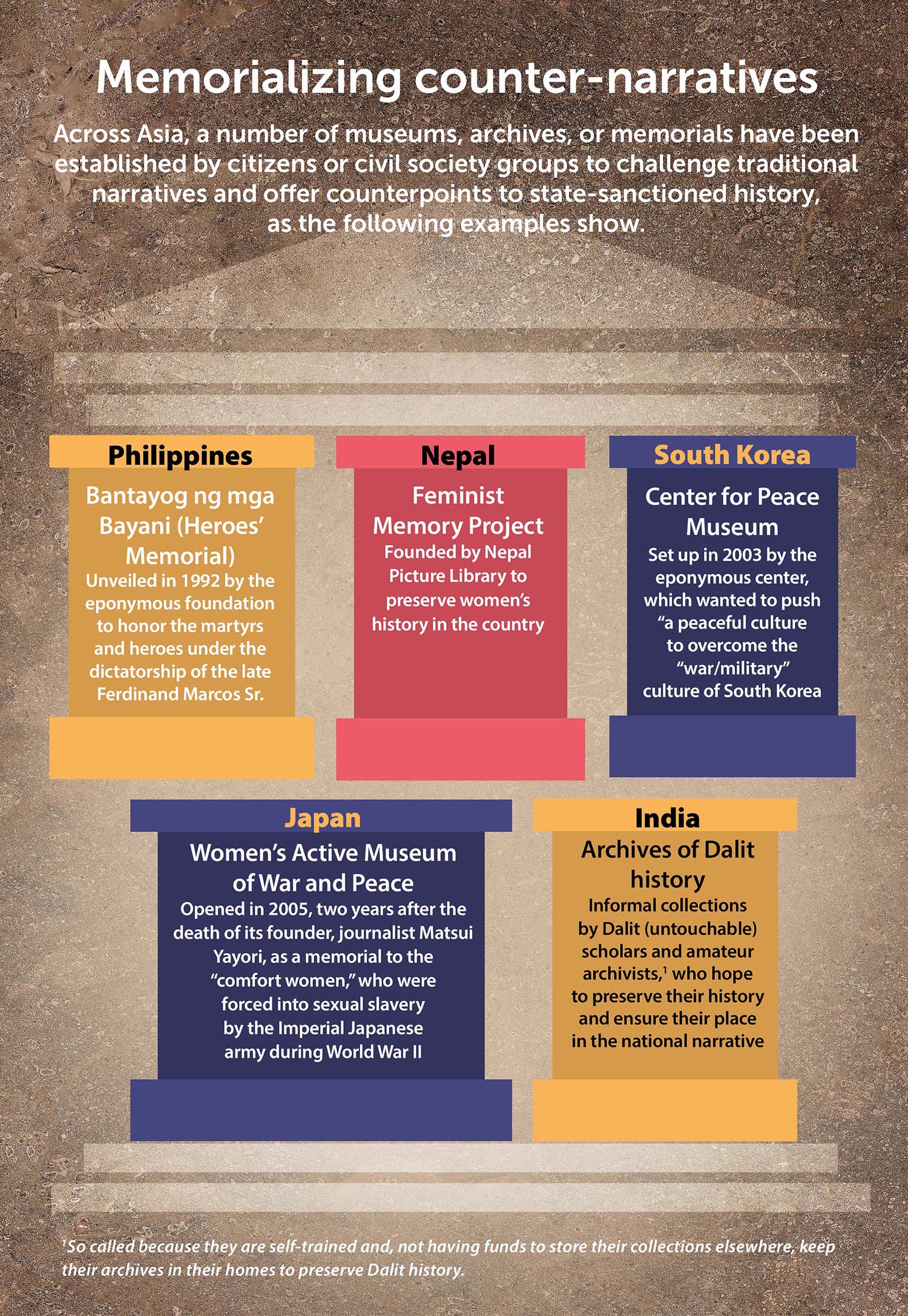
Collections from Yellow Shirts have been smaller, but the museum has purchased material from their protests to ensure different sides are represented in the collection. The picture would not be complete if the collection showed only one viewpoint.
Two donated museum materials illustrate this: a whistle and a book that the donor had gotten for free. The whistle was part of the campaign paraphernalia of the PDRC, a far right-wing movement that operated in 2013-2014. According to the young woman who donated it along with the book, she had received it as a child from her mother, who had told her to wear it hanging from her neck and “be a good girl.”
She wore it to school, prompting a kind comment from a teacher who had previously not given her much attention. Later, she went to a book fair where someone gave her a free history book. In the note that she attached to her donation to the museum, the young woman said that what she read in that book was far different from what her mother had told her about the political history of Thailand and what she had learned from her textbooks.
She said this prompted her to seek more information from various sources. In donating both the whistle and the free history book to the museum, I’d like to believe that she understood the importance of being open to other views, and that there are always several sides to a story.
The museum has gained respect from scholars and activists alike. Yet while it is thriving, maintenance of the collection and the sustainability of the project are challenges that I still need to overcome. The maintenance of sensitive materials such as newspapers, vinyl banners, or fabrics requires expertise that I don’t possess and equipment the museum still lacks.
I also remain the sole person responsible for all the work needed at the museum, since there is no budget for full-time staff. And the tasks keep multiplying. Aside from collating and keeping the physical artifacts safe, the museum also has a storytelling component, where people recount their experiences, written accounts of which are then uploaded to our Facebook page.
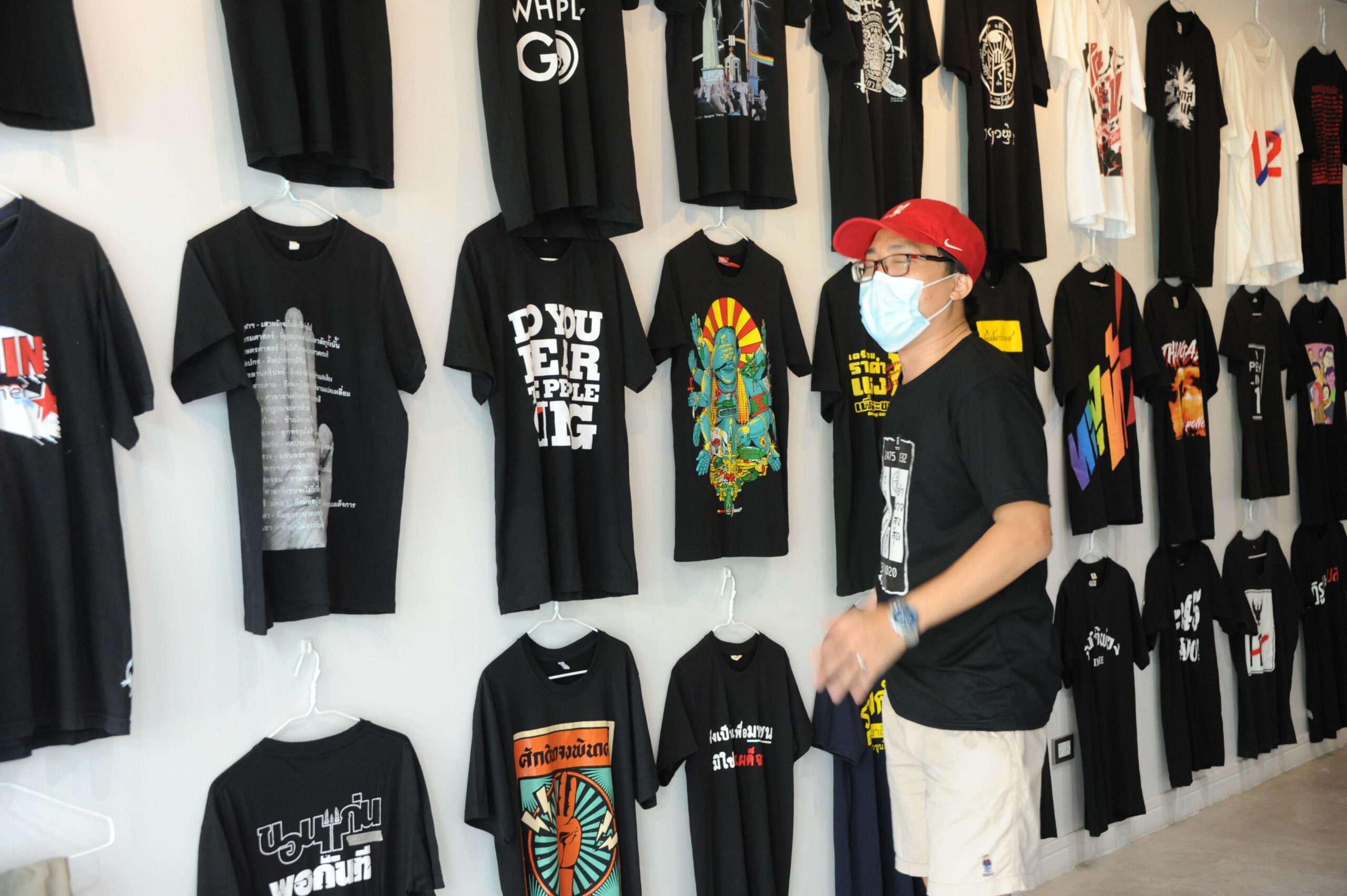
Despite difficulties, I am confident that the museum will continue to grow. I hope, however, that this initiative will inspire CSOs in other parts of the globe to document their struggle not only in words but also in campaign and protest ephemera.
“Official” histories may remain focused on the major players, but the story of a nation is never complete without the voices of its people, whether or not they agree with one another, and whether or not their demands are ever met. ◉










